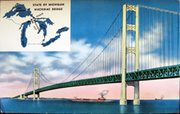 After the bombing of Pearl Harbor, the government banned civilian auto production. War profiteering was illegal. Priorities were clear; the military needed stuff. Domestic industry was enlisted to produce that stuff. Subsequently, factories needed workers, lots and lots of workers. Workers migrated from all states of the union, as well as Hawaii and Puerto Rico to work at the Willow Run bomber factory. At the height of production in the summer of 1943, the bomber plant employed 42,331 workers. In that moment, government will, corporate resources, individual initiative and collective motivation aligned to create unprecedented industrial productivity--precursor to the postwar economy, mid-century midwife to the middle class.
After the bombing of Pearl Harbor, the government banned civilian auto production. War profiteering was illegal. Priorities were clear; the military needed stuff. Domestic industry was enlisted to produce that stuff. Subsequently, factories needed workers, lots and lots of workers. Workers migrated from all states of the union, as well as Hawaii and Puerto Rico to work at the Willow Run bomber factory. At the height of production in the summer of 1943, the bomber plant employed 42,331 workers. In that moment, government will, corporate resources, individual initiative and collective motivation aligned to create unprecedented industrial productivity--precursor to the postwar economy, mid-century midwife to the middle class.Some of the Willow Run workers lived in government dormitories called Willow Lodge. Willow Village, prefab housing for 2500 families opened in July of 1943. Others lived in trailers and tents nearby. Community was born from collective sacrifice and experience. A diverse population shared migratory upheaval and the satisfaction of hard work rewarded with decent pay.
Housing at Willow Village was intended to be temporary, and the people who lived there understood that. The war would end and they would get on with their lives. By 1945 the workforce at the plant dropped to 16,000. Nearly, 1,000 families left the village. But, in 1946 Willow Village became temporary veteran housing. In that same year Kaiser-Frazer automobile company purchased the bomber plant and began producing cars within months. Although Willow Village housing was meant to be a temporary accommodation for the war effort, the auto industry gave people a reason to stay.






